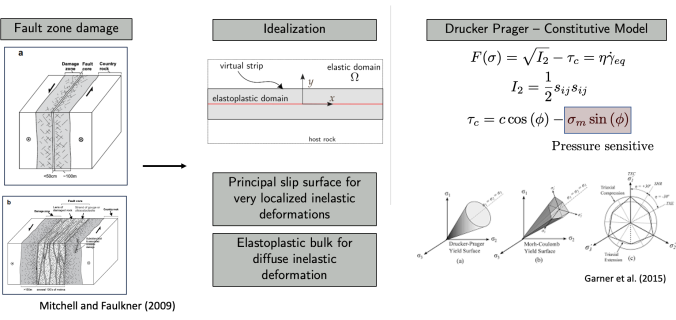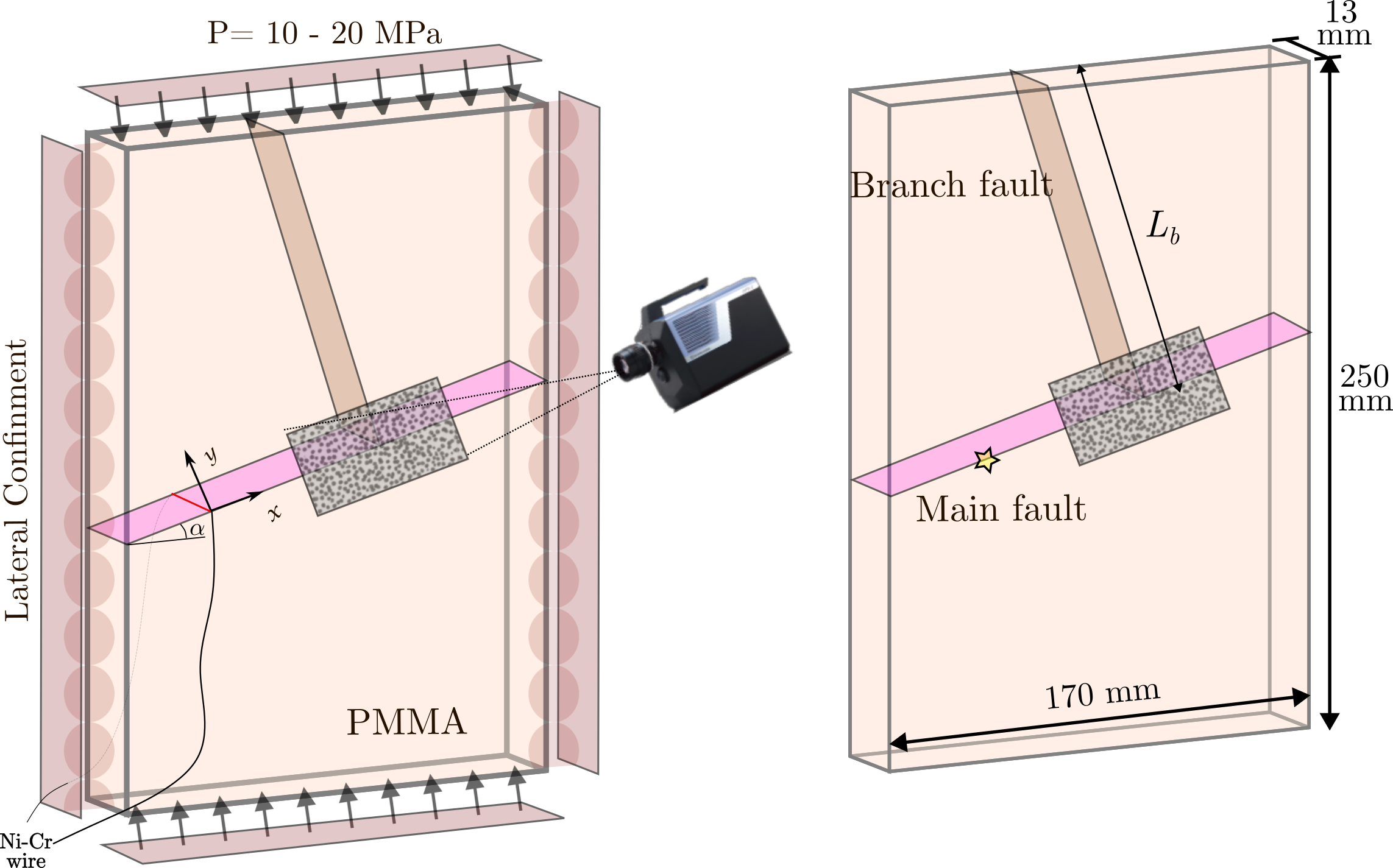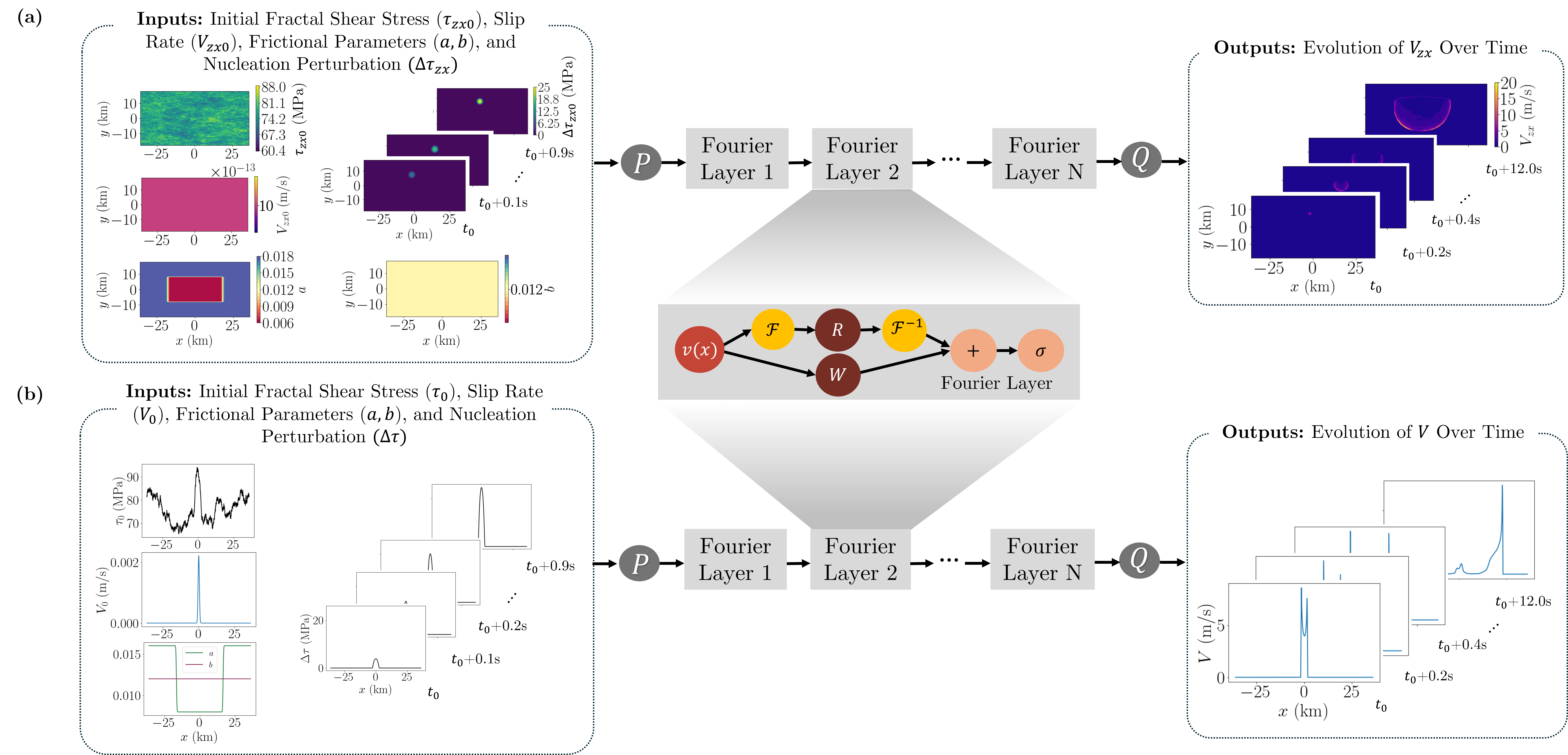Research
Overview
My research group will seek to couple geomechanics and geophysics to understand geohazards and subsurface processes across lengths and time scales, from mm to km and from quasi-static processes to rapid dynamics, respectively. My research will be grounded by observations that will inform experiments, which will guide high-fidelity modeling.
Earthquake Physics and Mechanics
I focus on studying earthquake mechanics through the lens of multi-physics modeling and laboratory experiments with the goals of: (i) gaining fundamental insights into stable-to-unstable sliding transitions while accounting for local nonlinear processes across laboratory and field scales, (ii) developing predictive tools for variable earthquake behaviors by capturing the competition between processes that control the extent of rupture propagation, and (iii) understanding how fault zone and permeability structure evolve over varying time scales from aseismic to coseismic.

High Resolution Fault Zone Physics
Through the development of FEBE we were able to model the evolution of fault zone with high resolution physics based on observations. This includes modeling fault zones with pre-existing damage, such as low velocity fault zones, and evolving damage, such as plasticity. By incorporating these physical mechanisms, we are able to better understand the interactions, or what we call coevolution, between surrounding fault zone and principal slip surfaces.
Material heterogenity and damage evolution within fault zones


Dynamics of Delayed Triggering
I am experimentally studying the role of fault branches as stress barriers that can delay the onset of rupture propagation.

Supershear Ruptures
As indicated by recent observations, earthquakes propagate along frictional interfaces at varying speeds. This can be due to different stressing conditions or geometrical variations. From a seismic hazard prespective the generated ground excitation is highly dependent on the propagation speed, an effect known as directivity. There are two main domains of speeds at which ruptures can propagate. (A) Subshear where the rupture propagation speed is below the shear wave speed. Typically, below Rayleigh wave speed. (B) Supershear where the rupture propagation exceeds the shear wave speed of the surrounding bulk. Since shear wave propagation within the bulk is by definition limited by shear wave speed, when a rupture exceeds shear wave speed, the directivity effect is inherently different than a subshear rupture. We are interested in understanding the ground motion characteristics of these two types of ruptures as well as the conditions that can lead to supershear ruptures.
Tsunamigensis
Combining the computational models of dynamic rupture with nonlinear shallow water wave equation, we were able to understand the mechanisms by which a strike slip earthquake can induce a tsunami despite the limited vertical displacement.
Fluid Induced Instabilities
We are experimentally studying the nucleation of fluid induced instabilities in fault zones. At Caltech's earthquake laboratory, I am using the experimental facility to study the nucleation of fluid induced instabilities in fault zones. We seek to understand the role of fault interface healing and different injection rates on the nucleation of instabilities that can lead to earthquakes. We are complementing the experiments with numerical modeling to understand the role of different parameters on the nucleation of instabilities. These experiments are critical for understanding the role of fluid in the nucleation of microseismicity that risk the deployment of human subsurface operations.
SciML for Geohazards

Alot of the problems we aim to understand involve expansive parameter spaces that are intractable to explore with traditional methods. This is where machine learning comes in. We are developing machine learning models that can accelerate numerical simulations and provide opportunties for uncertainty quantification.
In our most recent work, we developed an FNO model to predict the entire slip rate evolution based only on initial shear stress, and frictional parameters with a speed up of 10000x relative to the fastest forward model.
We are currently exploring the use of FNOs to accelerate full sequences of earthquakes.